Read all about the most historical churches in Ireland. The island is dotted with remarkable church buildings of which some have survived the inexorable passing of time.
Knock Basilica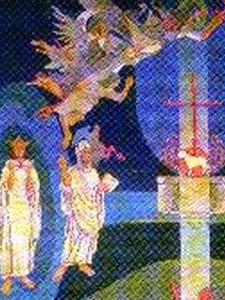
Knock Shrine attracts one and a half million pilgrims every year. Private pilgrimages take place all year with a special programme of ceremonies and devotions between April and October. Increasing numbers of pilgrims prompted the then Parish Priest, Monsignor James Horan to build the largest church in Ireland at Knock. In 1976 the Basilica of Our Lady, Queen of Ireland was opened here, with accommodation for over 12,000 people. The gable of the old church where the apparition took place in 1879 still remains the focal point of the shrine. In 1979 Pope John Paul visited here, and in 1993 Mother Teresa of Calcutta was a pilgrim. People came to pray and for spiritual reasons, but despite the serious purpose of their visits, the atmosphere at Knock is a happy and a joyous one.
Kilmallock Churches Castle And Town Gate 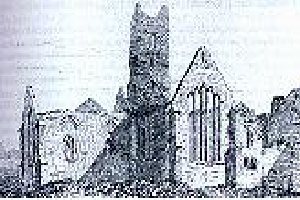
Blossom Gate Is the town gate and this is the only gate remaining from the medieval town wall of Kilmallock.
The Round Tower of this church may have originally been part of an earlier monastery. The probably 13th century church has three aisles, a chancel and it’s south wall contains a 13th century door. It’s use by the Church of Ireland had a bearing on the history of the Earls of Desmond; being the place where the ‘Sugan’ Earl surrendered in 1600 and where the 15th Earl attended a Protestant service causing dissent amongst his subjects.
The Dominican Priory here is a single-aisled 13th century church, the transept being added in the 14th, which has beautifully fine stone carving from both these centuries. In the 15th century a tower was added.
Although the four-storey castle is named after King John it is in fact from around the 15th century. It served as a arsenal for the Irish in 1645 and a hospital for Parliamentary forces in 1651. In the 19th century it was used as a forge.
Gallarus Oratory 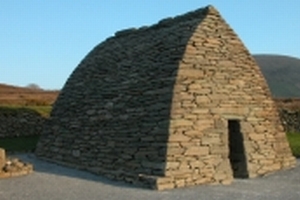
When you come to see the Gallarus Oratory, you will see the best preserved early Christian church in Ireland. Built in the 7th or 8th century, Gallarus Oratory is found in natural farmland overlooking Smerwick Harbour on the Dingle Peninsula in Kerry. It has been exposed to the winds and Atlantic weather for over 1200 years and this stone building to this day remains waterproof.
Its shape, often likened to an upturned boat is unusual, though not unique in early Irish churches. The oratory embodies the pinnacle of dry-stone corbelling, using techniques first developed by Neolithic tomb-makers. The distinctive shape is due to the stones being placed at a slight angle, lower on the outside than the inside to allow water to run off. The oratory remains waterproof to this day.
Measuring 15ft by 10ft, when you step inside the oratory you will experience a life gone by as you stare in awe at this stonework masterpiece.
The Gallarus Oratory Visitor Centre offers visitors the opportunity to explore the Oratory and also to enjoy an audio visual display of the archaeological sites of the peninsula and the history of the Gallarus itself.
Dysert O’ Dea, Corofin 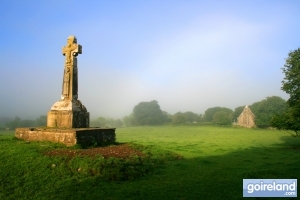
The Church and Round Tower stand on the site of an Early Christian monastery founded by St. Tola who died between 733 and 737. Where the church stands there was a 12th century Romanesque nave-and-chancel church with a plain chancel arch and a wonderfully decorated west doorway above which was an ornamental lancet window. Three narrow lancet windows were inserted in the east gable early in the 13th century.
Some considerable time later the church must have fallen into decay. Possibly as late as 1683, when some of the corner stones of the church were used as a base for the re-erection of the High Cross in the adjoining field to the east, the church was reconstructed in its present form. The lancet window in the west gable was incorrectly replaced roughly in its original position; the Romanesque doorway, with its beautifully carved geometric motifs, foliage and almost Mongoloid human masks, was inserted into the south wall, probably along with fragments from another doorway possibly from Rath some two miles away, and the chancel (parts of which may still be original) reconstructed to its 13th century state. Near the outside of the door is placed a medieval grave slab.
Croagh Patrick 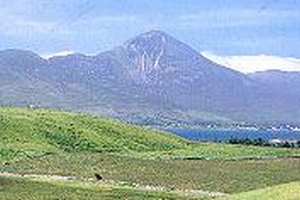
Croagh Patrick is located about 8km from Westport on the Louisburgh Road. Croagh Patrick is a sacred and beautiful hill. From most points of view, it rises from the sea on the southern shore of Clew Bay as a perfect cone to the height of 764 metres (2,510 feet). There are larger and loftier masses of mountain in Ireland, but none so striking from its isolation.
Croagh Patrick is one of the highest peaks to be seen in the Mayo-Galway region. It’s likely that Croagh Patrick protruded above the last ice sheet since aerial erosion taking place at this time above the level of the ice has given rise to scree slopes.
Did you know that when climbing Croagh Patrick you will walk on gold? Exploration has shown overall grades of 0.5 ounces of gold per ton in at least 12 quartz veins, which could produce 700,000 tons of ore.
Saint Patrick’s Chapel on the summit is normally locked, but the key will be made available on request by the Administrator of Westport Church. There is a car park at Murrisk at the base of the reek which is ideal for parking of coaches and other vehicles.
Waterford Church And Tower 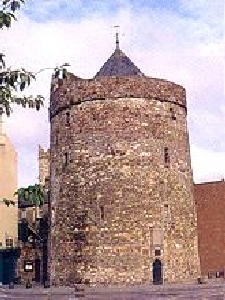
Waterford was founded by the Vikings around 914 and initiated its own episcopal See in the 11th century. It was taken by Diarmuid Mac Murrough Kavanagh, and later fell to Strongbow who married MacMurrough’s daughter in the now no longer existing Cathedral in the town. In medieval times it was a flourishing port, loyal to the English crown. However, it lost status by remaining Catholic, and submitted to Cromwell’s son-in-law in 1650. In the 18th and early 19th century, the town had a famous glass industry which was re-established in 1947. The church was founded as a convent for the Franciscans by Hugh Purcell about 1240. In 1395 the O’Conor Don, de Burgo, O’Brien and O’Kennedy submitted to Richard 11 in the Friary, and Chapters of the Order were held here in 1317, 1469, 1615 and 1834. Of the original buildings a nave, chancel and north aisle remain. There is a triple-light east window in the chancel. In 1545 Henry Walsh was granted a charter by Henry V!!! to make the Friary, by then dissolved, into a hospital, and the area over the nave of the church was used as such for hundreds of years, while the chancel and the Lady Chapel were used for the burials of members of illustrious Waterford families such as the Powers, Waddings etc. Reginald’s Tower: The tower was allegedly founded by Reginald the Dane in 1003, but it is probably a 13th century Norman tower.
Saint Cronans Cross & Round Tower 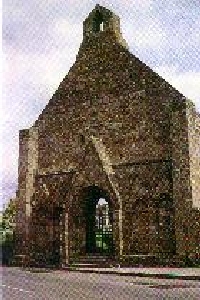
The modern road through Roscrea cuts through a monastery founded by St Cronan who died between 600 and 620. The monastery was active during the 12th century during which it was, however either plundered or burned four times. Of the 12th century romanesque church only the west facade remains beside the road.
Kylemore Abbey, Connemara 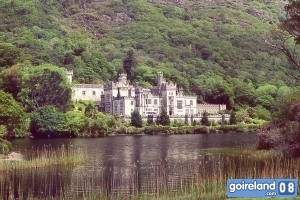
Kylemore Abbey, founded on the grounds of Kylemore Castle, is the oldest of the Irish Benedictine Abbeys. The Benedictine Order, who have lived here since 1920, have a long history and were founded in Belgium in 1665. The nuns fled Belgium in WWI and took up home in the former castle in 1920.
The building itself was built between 1863 and 1868 for a Manchester politician by the name of Mitchell Henry. Both he and his wife are buried here. Important fearures of Kylemore Abbey include the neo Gothic church which was build between 1877 and 1881 in memory of Mitchell’s wife, a miniature replica of Norwich Cathedral, complete with a crypt and a Victorian walled garden which is located about 1 mile from the Abbey. Kylemore Abbey also once was home to a girls boarding school under the tuition of the Benedictine nuns.
